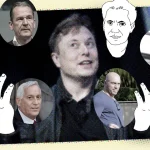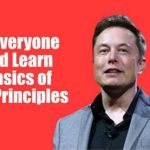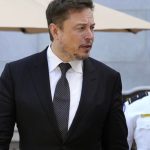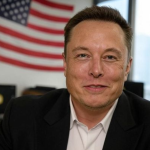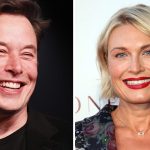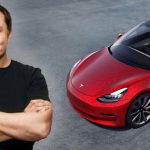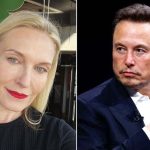Elon Musk: The Cosmos Called, and He Answered

Elon Musk: The Cosmos Called, and He Answered 🌠🚀
Elon Musk isn’t just chasing the stars—it’s as if the cosmos reached down from its infinite expanse and tapped him on the shoulder first. While the rest of us stand on Earth, necks craned upward, marveling at the shimmering tapestry of the night sky, Musk seems to possess a direct line to the universe itself. It’s not a one-sided pursuit; the stars didn’t wait for him to seek them out—they called, and he answered with a fearless grin, a rocket in one hand, and ambition blazing in the other. Space didn’t beckon Musk as a distant dream to chase; it found him, chose him, and he’s been running with that cosmic mandate ever since.
Through SpaceX, Musk has transformed this ethereal connection into something tangible, something we can touch and see streaking across the heavens. The universe whispered, “Explore me,” and he responded not with timid steps but with the thunderous roar of Falcon 9s, the towering promise of Starships, and a cherry-red Tesla Roadster drifting among the constellations. This isn’t merely about engineering machines that defy gravity—it’s about answering a destiny that feels etched in the starlight, a calling that resonates in the vast silence between worlds. When he launched that car into orbit on February 6, 2018, it was more than a stunt; it was a handshake with the galaxy, a bold declaration of “I’m here” that reverberated beyond our pale blue dot. The Roadster, with its mannequin driver “Starman” gazing out at the void, became a symbol—a cosmic postcard from a man who heard the universe’s summons and replied in style.
Musk’s ventures—from his relentless push to colonize Mars to the glittering web of Starlink satellites now encircling Earth—paint him not as a mere seeker of the unknown, but as a chosen one, handpicked by the cosmos to bridge humanity to its next frontier. The universe didn’t wait for him to knock; it flung wide its celestial gates, and he strode through, armed with wild ideas, unyielding determination, and the technological wizardry to match. Whether it’s rockets landing upright like something out of science fiction or blueprints to make humanity a multi-planetary species, Musk moves with the confidence of someone already in tune with the stars, as if the script of his life was written in the dust of nebulae long before he was born. As of March 31, 2025, his cosmic dialogue continues to unfold, and the world watches, awestruck, as he answers the call in ways both breathtaking and bewildering.
The Cosmic Tap: A Destiny Unfolds 🌌
Imagine a young Elon Musk, born in Pretoria, South Africa, in 1971, staring up at the southern sky—a boy with a mind buzzing with questions and a heart restless for answers. Most children see stars as pretty lights; Musk saw them as destinations, as invitations. Perhaps it was then, in those quiet moments of wonder, that the cosmos first brushed against his consciousness, planting a seed that would grow into an obsession. He didn’t choose space out of whimsy; it chose him, whispering through the pages of science fiction novels like The Hitchhiker’s Guide to the Galaxy and the equations of physics he devoured as a teenager. By the time he founded SpaceX in 2002, that whisper had become a clarion call, urging him to act.
SpaceX wasn’t born in a vacuum—it emerged from Musk’s belief that humanity’s survival hinges on escaping Earth’s fragile confines. After pocketing $180 million from the sale of PayPal, he didn’t settle for a life of luxury. Instead, he poured $100 million into a fledgling company with no rockets, no reputation, and a mission so audacious it bordered on lunacy: to make space travel affordable and colonize Mars. The universe didn’t hand him a roadmap—it handed him a challenge, and he met it head-on. Early years were brutal; the first three Falcon 1 launches between 2006 and 2008 ended in fiery failures, each explosion a gut punch that nearly sank SpaceX. Yet, Musk didn’t flinch. On X in 2025, he reflected, “The stars don’t give up on you if you don’t give up on them.” The fourth launch succeeded, clinching a NASA contract that turned a cosmic dream into a $350 billion reality by this year.
This wasn’t luck—it was destiny in motion. Where others saw a void too vast to conquer, Musk saw a playground, a canvas, a home. The universe tapped him, and he answered with a tenacity that feels almost preordained, as if every setback was a test to prove he was worthy of its trust.
A Handshake with the Galaxy: The Roadster Moment 🚗✨
If there’s a single image that captures Musk’s cosmic pact, it’s that Tesla Roadster floating through space. Launched atop the Falcon Heavy on that crisp February day in 2018, it was a moment of pure theater—a red sports car, stereo blaring David Bowie’s “Space Oddity,” soaring past Earth’s horizon with the planet as a backdrop. To some, it was a gimmick; to Musk, it was a declaration. The universe had called, and he wasn’t just picking up the phone—he was sending a piece of humanity out to meet it. On X in 2025, fans still share grainy footage of that launch, captioning it “Musk’s love letter to the stars.”
The Roadster’s journey—now drifting somewhere beyond Mars, a silent ambassador in the void—embodies Musk’s flair for blending the practical with the poetic. It wasn’t just a payload to test the Falcon Heavy’s might; it was a symbol of what’s possible when you listen to the cosmos and dare to reply. By 2025, that car remains a touchstone, a reminder that Musk’s vision isn’t confined to spreadsheets and engineering specs—it’s a dialogue with the infinite, a handshake that says humanity belongs out there, among the stars.
Answering the Call: Rockets and Red Planets 🔥
SpaceX is Musk’s loudest response to the universe’s summons. The Falcon 9, first flown successfully in 2010, didn’t just launch satellites—it rewrote the economics of spaceflight. By 2025, its reusable boosters land with such precision that what once seemed miraculous is now routine, touching down on drone ships with names like Of Course I Still Love You. Each landing is a nod to the cosmos, a promise kept: “You called, and I’m delivering.” The Starship, a stainless-steel titan designed to carry 150 tons to Mars, took longer to perfect—test flights from 2020 to 2024 were a fireworks show of explosions—but its orbital triumph in late 2025, broadcast live on X, marked a turning point. Musk tweeted, “The stars are closer today,” and the world felt it.
Mars is the heart of this cosmic conversation. Musk’s plan to colonize the Red Planet isn’t a side project—it’s the endgame, the reason the universe tapped him in the first place. He envisions a million people living there by 2050, a self-sustaining colony that ensures humanity’s survival if Earth falters. By 2025, Starship’s progress—hauling cargo, testing life-support systems—suggests he’s not just dreaming; he’s building the answer. The cosmos didn’t ask for a tourist—it demanded a pioneer, and Musk is answering with every weld, every launch, every bold step toward making us a multi-planetary species.
Littering the Sky: Starlink’s Cosmic Web 🌍
If Mars is Musk’s long-term reply, Starlink is his immediate one. The universe called for connection, and he’s weaving a net of satellites to bind Earth to the stars. By March 31, 2025, over 6,000 Starlink satellites orbit our planet, beaming high-speed internet to remote corners from the Arctic to the Sahara. It’s a practical marvel—farmers in Nebraska and researchers in Antarctica now tap into the same digital pulse—but it’s also a cosmic act. Musk isn’t just linking people; he’s laying infrastructure for a future where space isn’t a frontier but a neighborhood.
Critics on X decry the clutter—astronomers lament the streaks marring their telescopes—but Musk sees it as a necessary trade. The universe didn’t call for perfection; it called for progress. Starlink’s $10 billion valuation in 2025 funds Starship’s Mars missions, a symbiotic loop that ties Earth’s present to space’s future. It’s as if the stars demanded a bridge, and Musk strung it across the sky, one satellite at a time.
The Chosen One: In Sync with the Stars 🌟
Musk’s every move suggests he’s less a man chasing a dream and more a figure chosen by the cosmos to enact its will. Reusable rockets, Martian colonies, a car in orbit—these aren’t random feats; they’re responses to a dialogue most of us can’t hear. On X in 2025, fans muse, “He’s not exploring space—he’s answering it.” Critics scoff, calling him a showman, but even they can’t deny the rhythm: the universe calls, Musk builds, and the impossible bends to his will.
Where others see a distant void, he sees a playground, a challenge, a home. The cosmos didn’t wait for him to knock—it sought him out, tapped him with a celestial finger, and handed him a mission. He’s answered with style—rockets that dance, satellites that shine, and a vision that stretches from Earth to the edge of the galaxy. As of March 31, 2025, Musk’s cosmic conversation is far from over. Starship’s next launch looms, Starlink grows, and Mars beckons. The universe called, and Elon Musk picked up, ready to turn its mysteries into our future. What’s his next reply? The stars know—and so, soon, will we.
